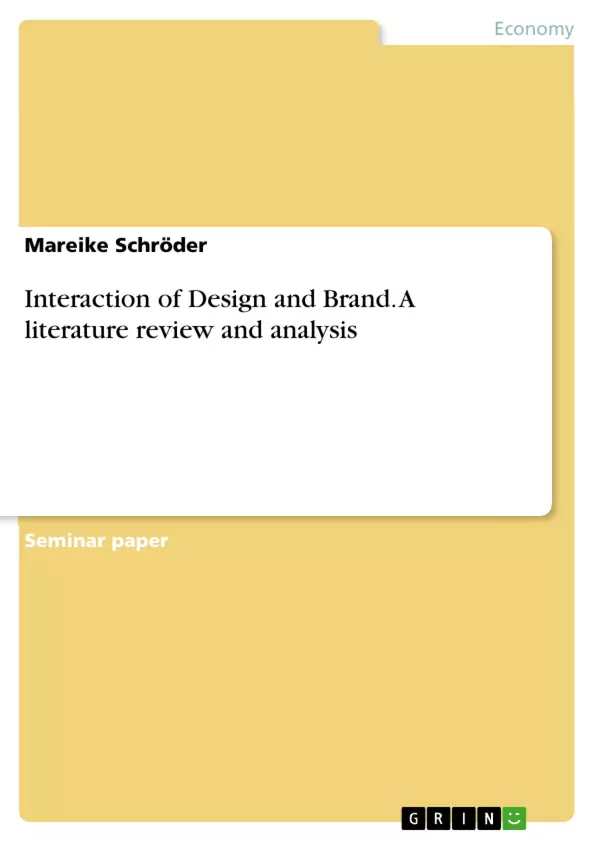This seminar paper introduces definitions for design and brand on which to base this research. Next, the brand personality concept and important Gestalt principles will be outlined to serve as a theoretic foundation for the literature overview. This main chapter is divided into two sub points: the first dealing with the interaction of design and brand, examining separately the interaction of brand with corporate, packaging and product design respectively; and the second treating the influence of these interactions on product evaluation and purchase intention. In the conclusion central results of the paper will be discussed and implications for further research and practitioners will be depicted.
Table of Contents
- 1. Introduction
- 1.1 Motivation, Structure and Goals
- 1.2 Role of Design and Brand in Marketing
- 2. Theoretical Foundations
- 2.1 Definitions
- 2.2 Underlying Theories
- 3. Interaction of Design and Brand and Its Effects on Product Evaluation
- 3.1 Interaction of Design and Brand
- 3.1.1 Interaction of Corporate Design and Brand
- 3.1.2 Interaction of Package Design and Brand
- 3.1.3 Interaction of Product Design and Brand
- 3.2 Influence of Design and Brand on Product Evaluation and Purchase Intention
- 4. Conclusion
- 4.1 Discussion of Central Results
- 4.2 Implications for Theory and Practice
Objectives and Key Themes
This seminar paper aims to provide an overview of the current research on the interaction of design and brand, specifically focusing on how this interaction impacts consumer product evaluation and purchase intention. It explores the theoretical foundation of this relationship, drawing on concepts like brand personality and Gestalt principles. The paper reviews the existing literature to analyze the interplay between brand and design elements, including corporate, packaging, and product design.
- The role of design and brand in marketing and their impact on product differentiation and consumer loyalty
- The interaction between brand and different types of design (corporate, packaging, product)
- The influence of design and brand on consumer product evaluation and purchase intention
- The application of Gestalt principles and brand personality concepts in understanding design-brand interaction
- Implications for further research and practical applications in marketing and design management
Chapter Summaries
The seminar paper begins by introducing the research topic within the context of marketing, highlighting the growing importance of design and brand in today's market. It outlines the motivation, structure, and objectives of the paper. Chapter 2 provides a theoretical foundation by defining design and brand and introducing relevant concepts such as brand personality and Gestalt principles. Chapter 3 delves into the interaction between design and brand, examining each type of design (corporate, packaging, product) separately and analyzing their influence on consumer evaluation and purchase intention. The conclusion summarizes the key findings and discusses their implications for both theoretical understanding and practical application in the field of marketing.
Keywords
This seminar paper focuses on the intersection of design and brand, specifically investigating their impact on consumer perception and purchasing decisions. Key concepts explored include brand equity, brand personality, Gestalt principles, product differentiation, consumer evaluation, and purchase intention. The paper examines the interaction between different types of design, such as corporate design, packaging design, and product design, and their role in shaping consumer perceptions of products and brands.
- Citar trabajo
- Mareike Schröder (Autor), 2012, Interaction of Design and Brand. A literature review and analysis, Múnich, GRIN Verlag, https://www.grin.com/document/286805



